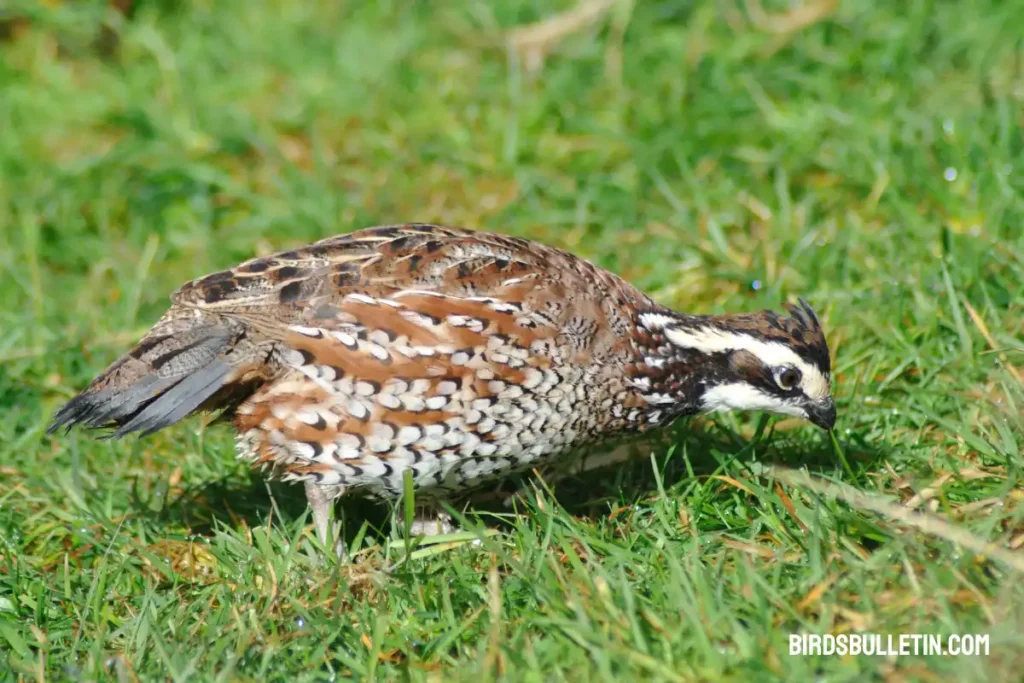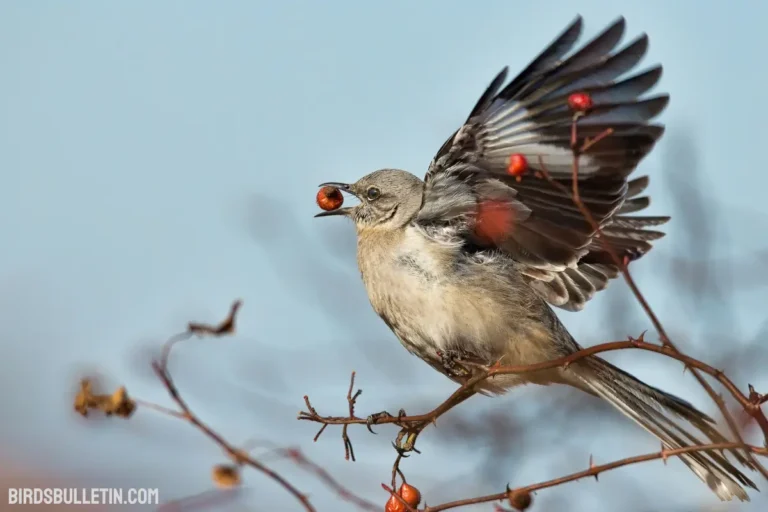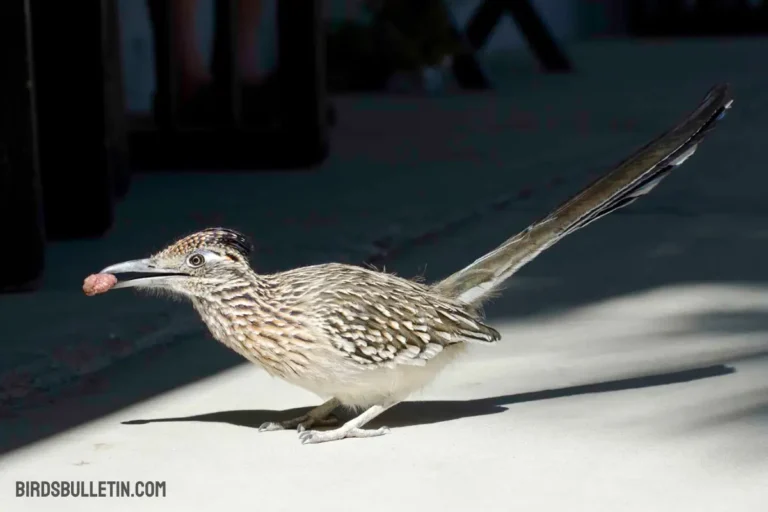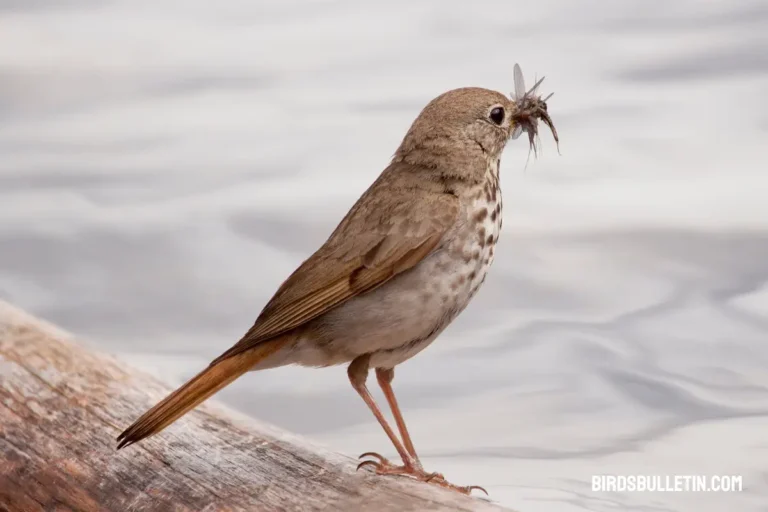What Does the Bobwhite Quail Eat?
The aptly named northern bobwhite quail announces its presence in rural habitats across eastern North America. This little gamebird suffers ongoing broad declines as modern pressures transform farmland biodiversity and management.
These plump, chickens dwell in weedy open woodlands but require adjacent cultivated lands to thrive. Abundant waste grain in crops helps sustain bobwhites through winter while pasturelands offer prime chick-rearing grounds.
But the bulk of their diet depends on seasonally fluctuating native grass and forb seeds interspersed with essential insect protein for fast nestling growth.
Looking for more articles about birds’ food and diet
Favorite Bobwhite Quail Foods
Bobwhites forage exclusively on the ground, taking a varied combination of plant and animal matter. Seeds top the list of staple foods while insects provide crucial nourishment during breeding season. Some key items include:
| Food Item | Details |
|---|---|
| Seeds | Favor native weedy plants, Lespedeza, ragweed, partridge pea, panic grass, and crops like wheat, and millet. |
| Green Vegetation | Consume a wide variety of leafy matter, shoots, and blossoms from April to November. |
| Insects | Beetles, ants, grasshoppers, and caterpillars are crucial for breeding season protein and chick growth. |
| Berries and Fruits | Favored treats include blackberries, blueberries, and wild cherries. Also, eat some pine seed. |
How Often do Bobwhite Quails Eat?
Adults feed year-round in frequent small intervals, scratching and pecking the ground while slowly walking.

Chicks start pecking food the first day after hatching and quickly require frequent meals for their unusually rapid growth. Nesting hens need extra nutrition and forage more actively during breeding times.
What Time of Day Bobwhite Quails Feed?
Most active periods are early morning and late afternoon traveling between foraging and dust bathing sites.
But they sporadically feed all day with brief pauses for preening and resting while still keeping alert. If conditions allow, they continue browsing on warm afternoons seeking nourishment.
How Bobwhite Quails Gather Food?
Bobwhite quails are ground-dwelling birds that forage for food in a manner similar to other quail species. Here are some ways in which Bobwhite quails gather food:
01. Ground Foraging: Bobwhite quails spend a significant amount of time on the ground, where they forage for seeds, insects, and other small invertebrates. They use their strong legs and beaks to scratch and peck at the ground, uncovering food items hidden in the leaf litter or soil.
02. Seed and Grain Consumption: Seeds and grains are a major component of the Bobwhite quail’s diet. They forage for a variety of seeds, including grass seeds, weed seeds, and grains, which they pick directly from the ground.
03. Insect and Invertebrate Feeding: Insects and other invertebrates form an important part of the Bobwhite quail’s diet, especially during the breeding season and when young chicks are being raised. They consume insects such as beetles, ants, grasshoppers, and caterpillars.
04. Vegetation and Plant Materials: Bobwhite quails also eat a variety of plant materials, including leaves, buds, and fruits. They browse low-lying vegetation to supplement their diet with nutrients found in plant matter.
05. Water Intake: While not directly related to food gathering, quails obtain some of their water needs from the food they consume. However, they still require access to fresh water sources for drinking.
Bobwhite quails are adaptable foragers, and their diet vary based on factors such as the season, habitat, and the availability of food resources.
What Bobwhite Quails Eat in Winter?
Winter diet relies more heavily on seeds, berries, and buds when insects prove hard to access. Fortunately, they are able to digest fibers allowing woody plant browsing. Conserving energy also becomes a priority during frigid temperatures so they forage more cautiously.
What do Baby Bobwhite Quails eat?
Baby Bobwhite quails have dietary needs that differ from adults. Their diet typically consists of small, soft, and easily digestible food items. Here’s what baby Bobwhite quails commonly eat:
1. Insects and Invertebrates: Chicks rely heavily on insects and small invertebrates for protein and essential nutrients. Common prey items include small insects, larvae, and spiders.
2. Seeds and Small Grains: While adult Bobwhite quails primarily forage for larger seeds and grains, chicks consume smaller seeds and grains that are more manageable for their small size.
3. Vegetation and Greens: Chicks peck at tender vegetation, including grasses and small plants. This helps introduce plant-based nutrients into their diet. However, their dependence on vegetation usually increases as they grow.
4. Commercial Quail Starter Feed: Many quail breeders and enthusiasts supplement the natural diet of baby Bobwhite quails with specially formulated commercial quail starter feeds.
As they grow, their digestive system develops, allowing them to process a broader range of foods similar to the diet of adult Bobwhite quails.
Frequently Asked Questions
01. How many kinds of seeds do bobwhites consume?
Research documents over 60 species of native weedy plants, grains, and woody seed types in bobwhite seasonal diets – diversity providing optimal nutrition.
02. How do modern pressures impact their diet?
Insecticide use reduces crucial invertebrates needed for breeding. And lack of habitat diversity limits the availability of seeds, berries, and cover year-round.
03. What consumables aid winter survival most?
High-protein weed seeds allow fat storage helping minimize cold weather impacts. Common ragweed and partridge peas prove especially valuable.
04. Why does diet influence reproduction capacity?
Access to nourishment rich in calcium and proteins directly impacts breeding success. Well-fed adults produce more, larger eggs and raise larger broods.
Conclusion
The popular bobwhite quail depends on diverse habitat provisions to maintain stable wild populations, including nourishing fare readily available through the year – especially protein-packed insects critical for the breeding season.
Modern agricultural changes increasingly threaten traditional food sources. However progressive management focused on integrating wildlife-friendly native plants into working lands could turn the tide for this struggling species.
References
- Brennan, Leonard A., et al. (2022). Northern Bobwhite (Colinus virginianus), version 1.0. In Birds of the World (S. M. Billerman and B. K. Keeney, Editors). Cornell Lab of Ornithology, Ithaca, NY, USA. https://doi.org/10.2173/bow.norbob.01
- Rosene Jr, Walter. (1969). The bobwhite quail: its life and management. Rutgers University Press.
- Stoddard, Herbert L. (193)1. The bobwhite quail: its habits, preservation, and increase. Charles Scribner’s Sons.







